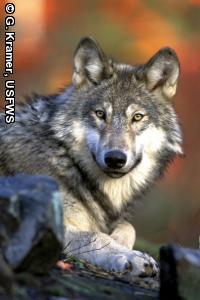
As of May 4, The Minnesota Department of Natural Resources has assumed management responsibilities for the state’s gray wolf population following the delisting of the wolf as a threatened species.
According to a DNR press release, the gray wolf was initially removed from the federal endangered species list in March of 2007, but technical questions regarding the declassification procedure resulted in its listing as a threatened species in September of last year. After re-examining the case, the U.S. Fish and Wildlife Service reissued its decision in March of 2009.
“The major change with state management is that it allows individuals to directly protect their animals from wolf depredation, subject to certain restrictions,” said Dan Stark, DNR wolf management specialist, in the press release.
The new management plan divides the state into two zones, providing greater protection in the wolf’s core region, the northeastern portion of the state (think the Quetico Superior Region). In this region, property owners can shoot or destroy wolves in the act of stalking, attacking or killing livestock, a guard animal or a domestic pet under the owner’s supervision. In the southern portion of the state, a person can shoot a wolf at any time to protect livestock or domestic animals. No baiting is allowed, and by law, no public hunting or trapping is allowed for five years after declassification in order to ensure population stability.
Minnesota wolves, considered part of the Great Lakes population, have stabilized at 3,000 wolves and must stay at 1,600 to be considered a healthy population. Learn more about the MN DNR’s management plan on it’s web site.

